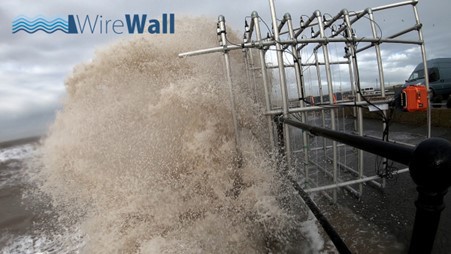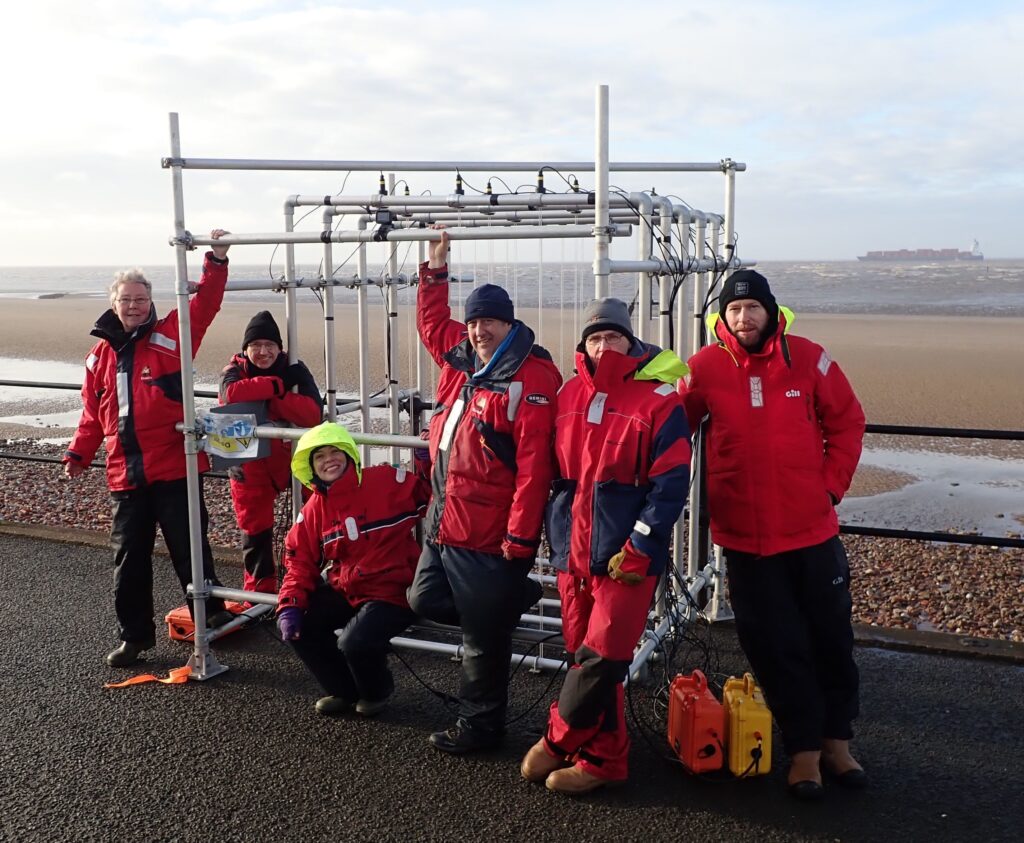The UK’s National Oceanography Centre (NOC) has developed a new coastal wave overtopping system called WireWall which can measure the speed and volume of overtopping water on a wave-by-wave basis.
Coastal overtopping can cause flooding and pose a hazard to people, property and infrastructure so the ability to measure overtopping in the field will help reduce uncertainty in forecasts and improve hazard warning systems.
Traditionally, field data is obtained using large collection tanks that only obtain data on the total volume of water that has overtopped during a storm or high tide event. In addition, tanks can only be deployed on certain structures, such as the top of a coastal defense barrier, whereas WireWall has been designed so that it can be deployed on almost any structure.
WireWall overtopping measurements could be used to improve industry-standard overtopping prediction tools and hence improve flood and hazard forecasts. Field measurements of overtopping will also enable the study of wind and wave conditions that cause overtopping, thereby improving numerical models.
The WireWall project was funded by the Natural Environment Research Council (NERC) program ‘Innovative Monitoring Approaches’. A follow-on project called ‘Coastal REsistance: Alerts and Monitoring Technologies’ (CreamT) is now underway, funded by NERC’s Digital Environment program.
For more on coastal hazard forecasts, please click here.




